How Do I Know if My Indian Ringneck is Happy?
There’s nothing quite as rewarding as having a joyful, vibrant pet bird. However, because birds hide signs of illness, it can be difficult for owners to discern their pet’s wellbeing. You want to ensure your Indian ringneck is healthy and content, but how exactly can you tell? While each bird has its own personality, there are some telltale signs that indicate when these parrots are feeling their best.
Signs of a Happy, Healthy Indian Ringneck
When cared for properly, Indian ringnecks become playful, energetic and loving pets. Here are some of the key indicators that your bird is in good spirits both mentally and physically:
Read Our Article: Do Indian Ringnecks Get Along With Other Ringnecks?
Smooth, Bright Plumage

Healthy Indian ringnecks have a gorgeous coat of feathers in vivid greens, blues and oranges. Their plumage should appear sleek, glossy and well-groomed. Watch for your bird carefully preening and arranging his feathers, which distribute beneficial oils over the surface. Fluffed, frayed or missing feathers can signal distress, illness or malnutrition. Molting is natural, but excessive feather loss could indicate a problem.
Lots of Chirping and Whistling
Indian ringnecks are quite vocal and will “talk” to you with a range of chirps, tweets and mimicked words when they’re feeling playful. Listen for your bird making an array of sounds beyond just squawking. Frequent vocalizing shows he’s stimulated and trying to get your attention. Be sure to respond and interact when your pet rings his bell for you!
Zipping Around the Cage and Room
A hallmark of a happy ringneck is that he’ll be very active zipping around his cage, hanging upside down and playing with toys. When out of his cage during free flight time, a healthy bird will enthusiastically fly laps and climb to high perches. If your bird is mostly still and inactive, it could signal illness, stress or depression.
Eager Appetite and Foraging
Ringnecks have a healthy appetite for a nutritious diet of pellets, veggies, fruits and seeds. At feeding times, a content bird should act hungry and excited. This breed also loves to forage, so provide opportunities to work for food by stashing it around their cage. Loss of appetite or disinterest in food is very concerning and may indicate sickness.

Relaxed and Enjoying Interaction
Frequent bonding, training and positive interaction with you is key for an Indian ringneck. When you open the cage, a happy bird will be eager to come out and play. He’ll likely make contented soft chirping noises when being petted or simply sitting with you. If he squirrels away or gets aggressive, it may signal fear, loneliness or mistrust.
By tuning into these five indicators, you can get a good read on your parrot’s level of health and happiness. Of course, each bird has its own unique personality, so get to know what’s “normal” for your pet. If you notice a persistent change in behavior, schedule a vet visit to address potential issues before they worsen. With attentive, loving care, you’ll have a delightful companion bird for many years.
Causes of Unhappiness or Stress in Indian Ringnecks
While Indian ringnecks can thrive when properly cared for, there are some common factors that can lead to these intelligent parrots becoming unhappy, stressed or depressed. Being aware of what impacts your bird’s wellbeing is key to addressing issues promptly. Some potential causes of unhappiness include:
Health Problems
Like other pets, Indian ringnecks can suffer from infections, injuries, parasites and chronic conditions. Issues with the beak, feet and feathers are common. They are also prone to egg binding or other reproductive issues, especially females. Molting and conditioning can take a toll. Make sure your bird eats a balanced diet, gets plenty of full-spectrum light, and supplements with vitamins. Regular vet check-ups are a must to catch any problems early.
Poor Environment
An unsuitable living space can quickly lead to Indian ringneck stress. These active parrots need plenty of room to spread their wings – a minimum cage size of 24″ W x 24″ D x 30″ H per bird is recommended. Lack of playtime outside the cage, as well as insufficient toys and activities leads to boredom. Proper temperature, light and noise levels are key too. Analyze your bird’s environment and make adjustments to meet their needs.
Lack of Interaction and Stimulation
Ringnecks are highly social and intelligent. Without frequent bonding time with their owners and activities that challenge their minds, they can become distressed and even prone to self-harming behaviors like feather plucking. Make sure to spend quality interaction time with your pet bird each day. Additionally, provide puzzle toys and foraging activities to keep him happily occupied even when alone. Training is also great mental stimulation.
Poor Diet
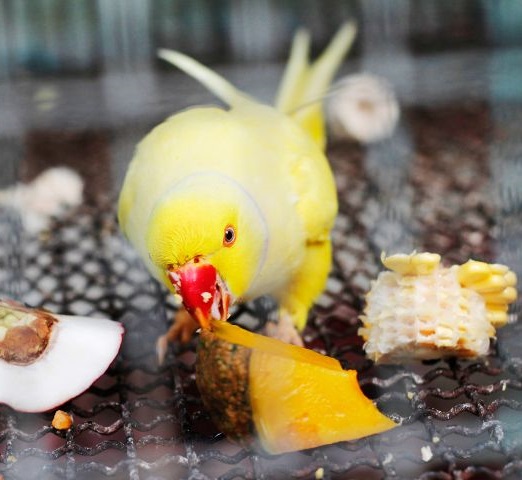
Like most parrots, Indian ringnecks need a balanced diet with limited seed and ample vegetables, fruit, sprouted/soaked legumes, nuts and quality pellets to thrive. A lack of nutrients, vitamins and minerals due to a poor diet causes serious health issues over time and leaves them feeling unwell. Consult an avian vet for the ideal diet proportions and optimal food choices.
By identifying and addressing any potential causes of stress, you can help ensure your Indian ringneck returns to being his happy, upbeat self again. Stay vigilant in meeting his care needs.
Tips for Keeping Your Indian Ringneck Happy
If you notice your Indian ringneck acting less than his usual vibrant self, there are some simple ways to turn his mood around:
- Let Him Out for Supervised Free Flight Daily – Ringnecks need frequent aerobic exercise to stay fit. Let your bird spread his wings for at least an hour a day, zooming freely in a safe, bird-proofed room under your supervision.
- Shower Your Bird with New Toys Frequently – Boredom and lack of mental stimulation leads to bad behaviors. Rotate new puzzle and shredding toys into your bird’s cage every 1-2 weeks to pique his curiosity and intelligence.
- Chat and Whistle Back and Forth – Spend quality time each day bonding one-on-one with your ringneck. Respond when he chirps at you – this social interaction is so important to his happiness. Teach him new words too!
- Offer Nutritious Foods He Loves – Ringnecks delight in trying new fruits, veggies and leafy greens. Make sure 75% of his diet is a diverse mix of healthy foods. He’ll be excited to forage and play.
- Check for Signs of Illness – Schedule annual vet exams and monitor your bird for symptoms of disease which could explain a mood change. Act quickly if illness is suspected.
- Focus on Positive Reinforcement Training – Increase mental stimulation and build trust with your ringneck through clicker training him to do fun tricks. Use only treats and praise – never punishment.

With attentive care focused on their unique needs, you can have a delightful, content feathered friend for years to come. Pay attention to your parrot’s signals and make adjustments as needed – a happy bird makes for a happy bird parent!
Next Read: Indian Ringneck Parakeets: Overview, Characteristics and Care
Conclusion
Indian ringneck parakeets make for rewarding companion birds, but require attentive care and interaction to thrive. By being observant of your pet’s vocalizations, activity levels, appearance, appetite and demeanor, you can assess his happiness and wellbeing. Provide a roomy enriched habitat, supervised free flight, bonding time, mental stimulation and a balanced diet. Watch for any behavior changes or symptoms of illness which could be causing distress. With ample attention to their physical and psychological needs, an Indian ringneck will become a vibrant, chatter-loving addition to your home. If challenges arise, consider environmental tweaks or a vet visit to get your feathers friend flourishing again. When properly cared for, the Indian ringneck’s beauty and lively personality will bring you joy for many years.



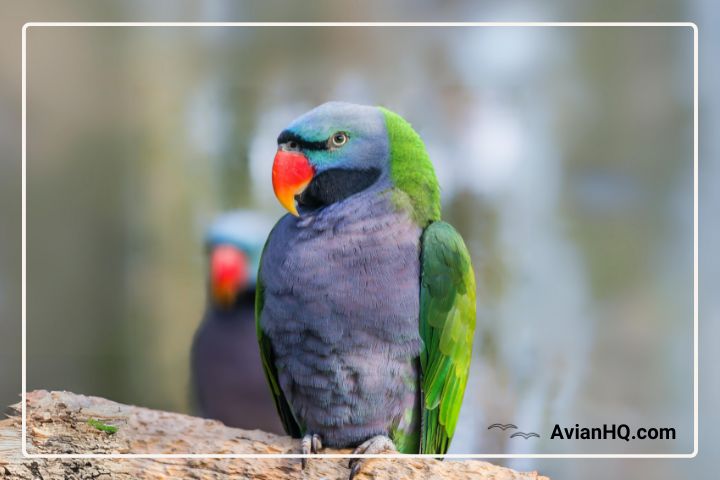
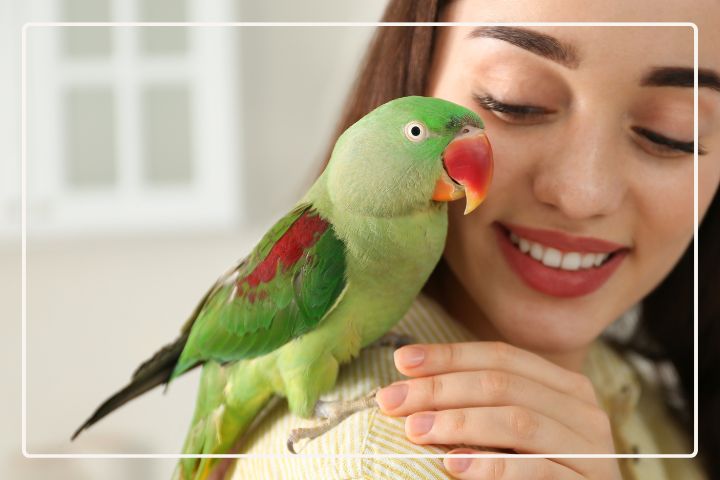
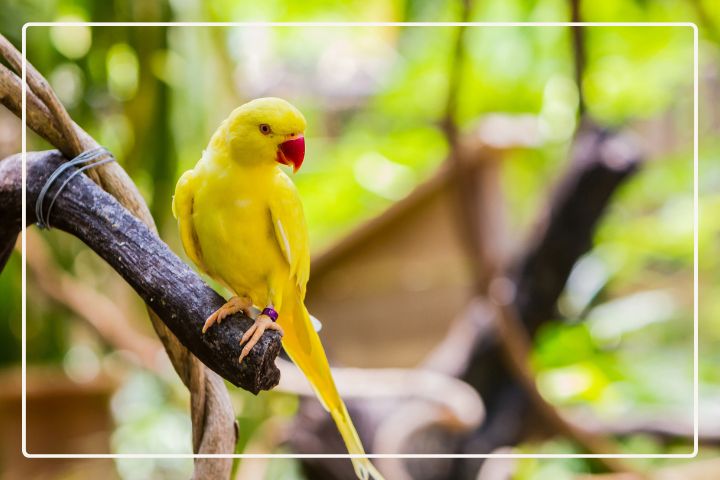

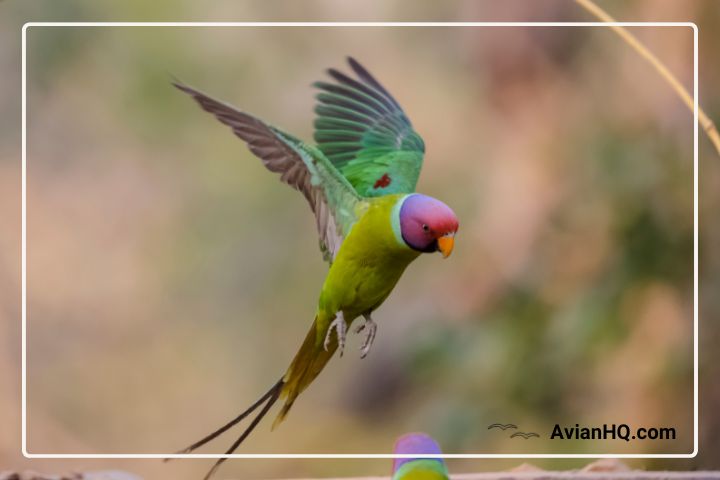
Thanks a bunch for sharing this with all of us you actually know what you are talking about! Bookmarked. Please also visit my site =). We could have a link exchange agreement between us!